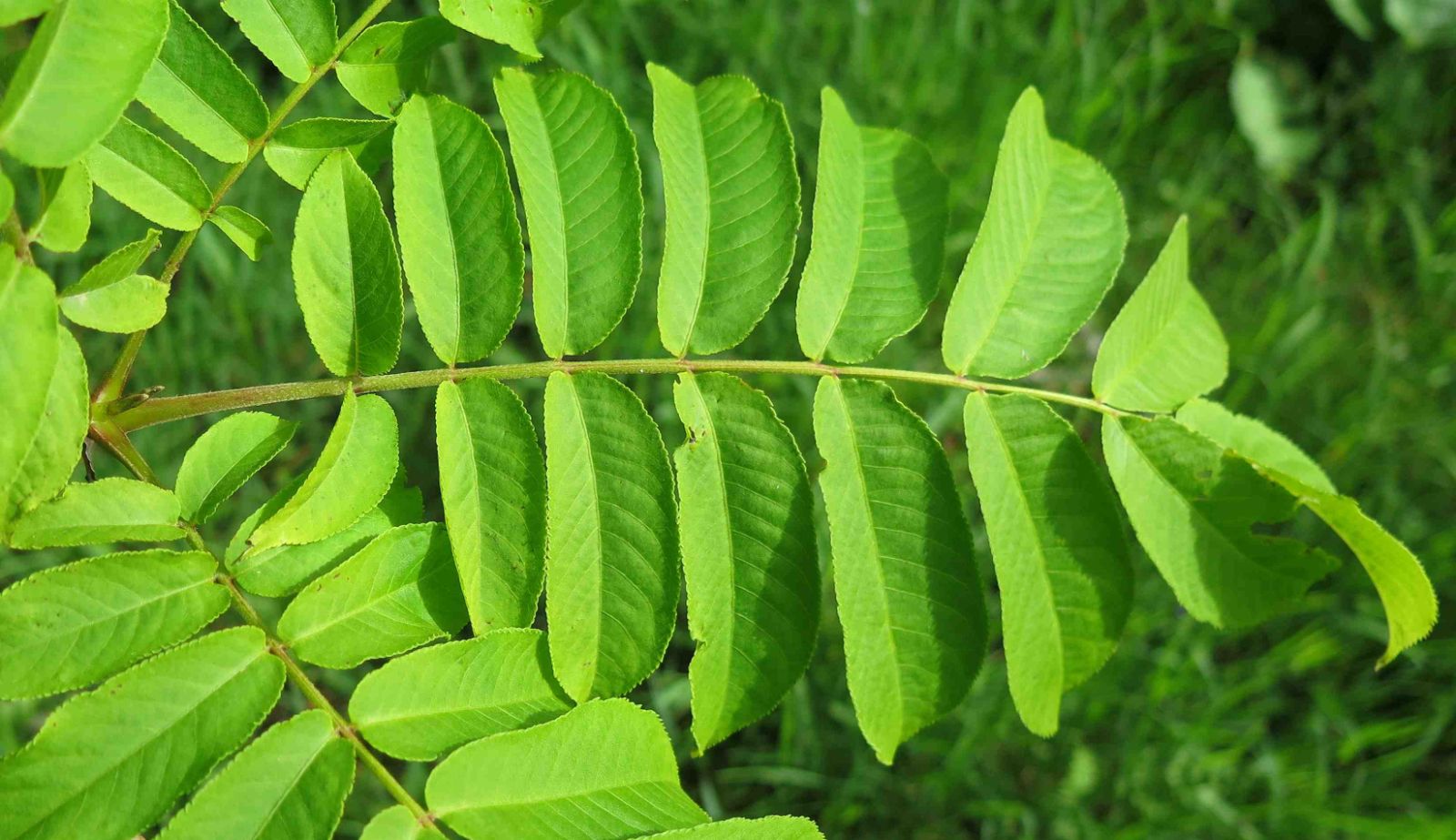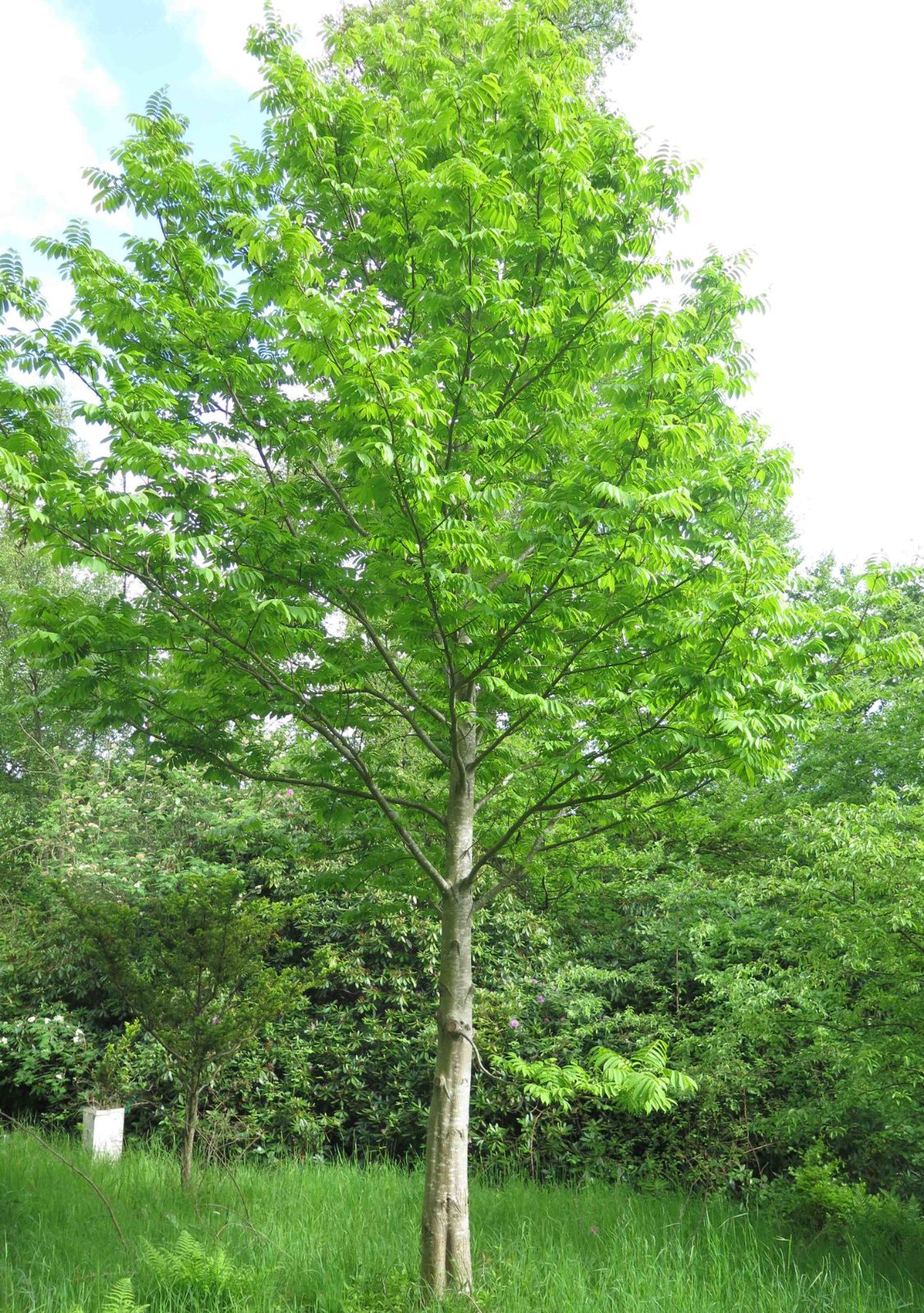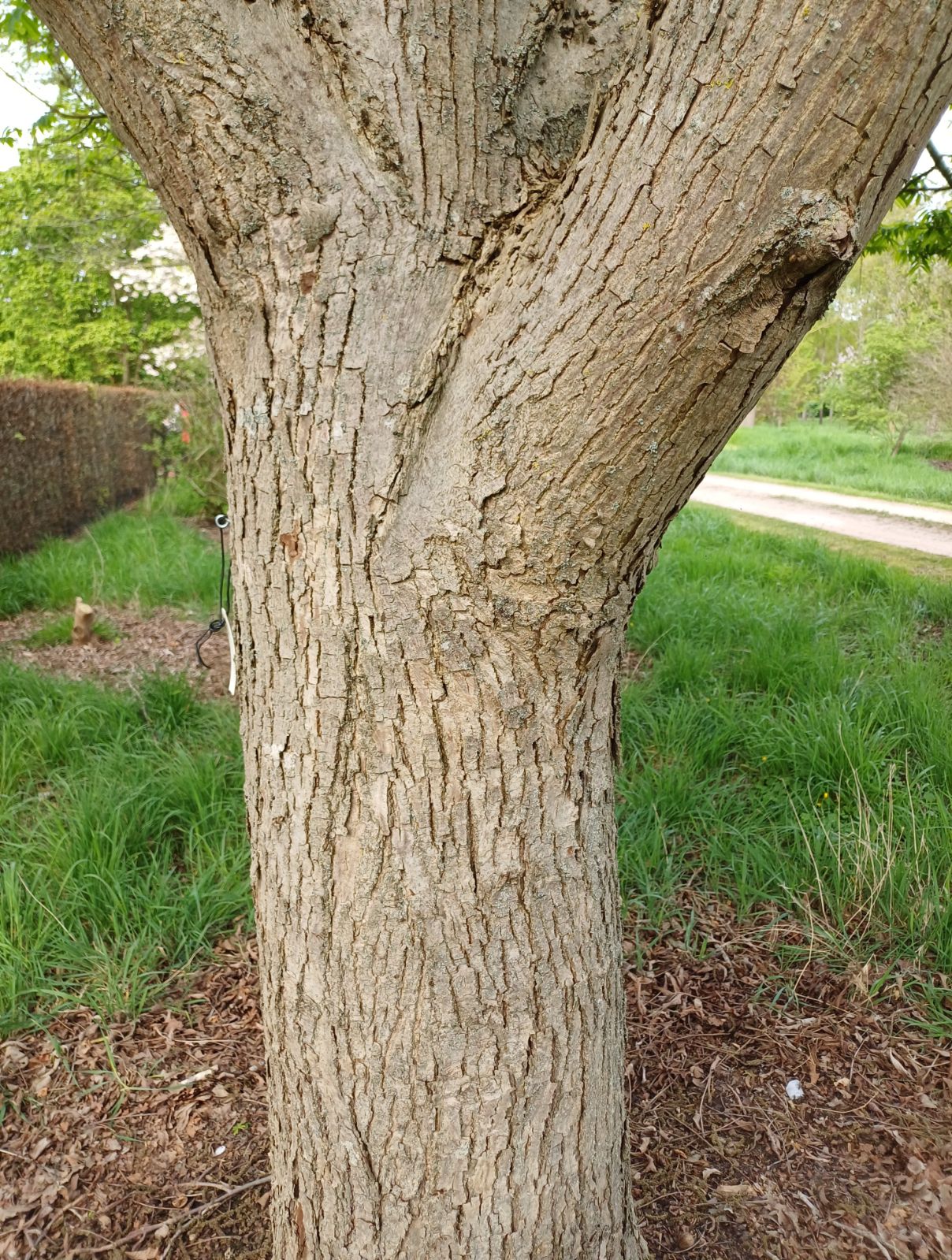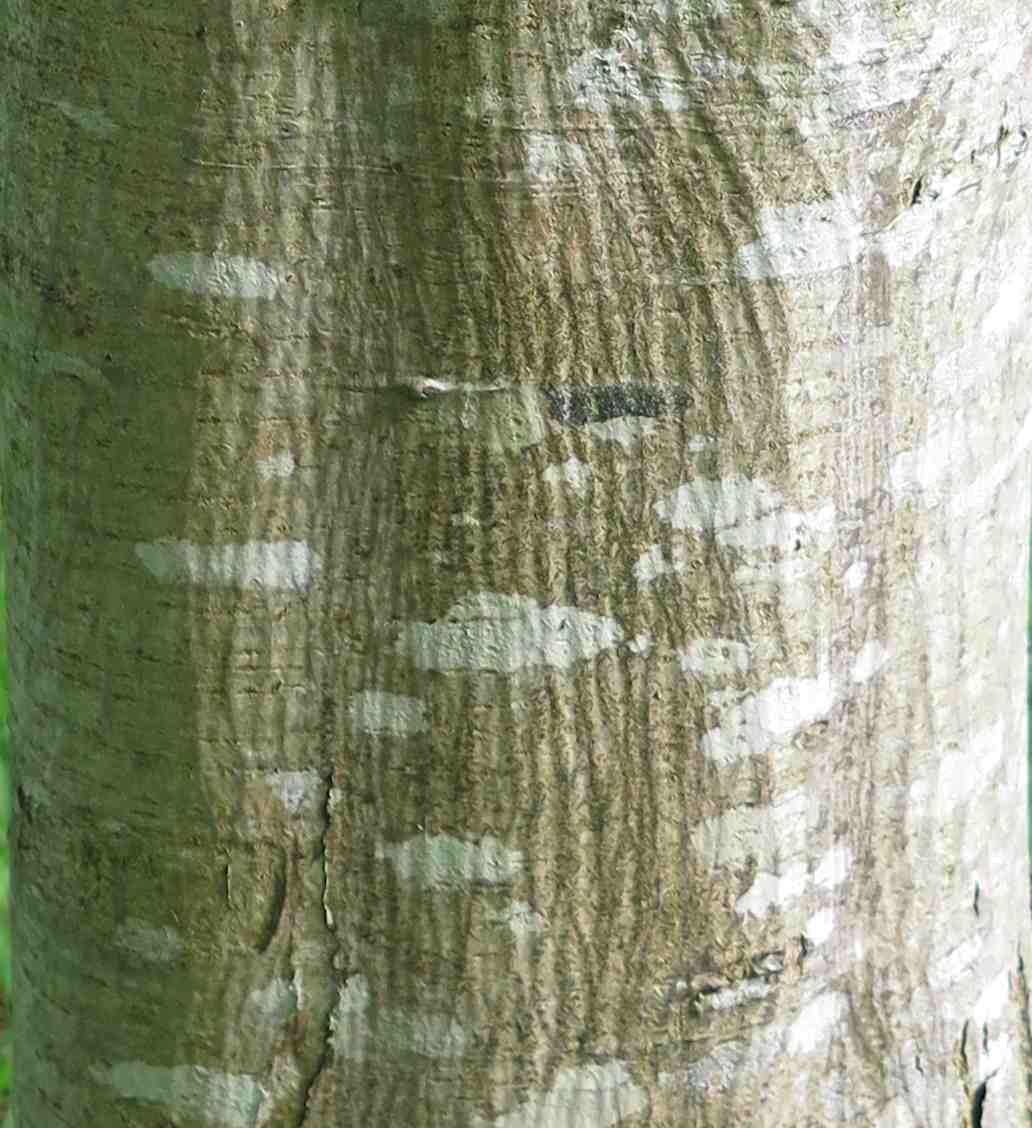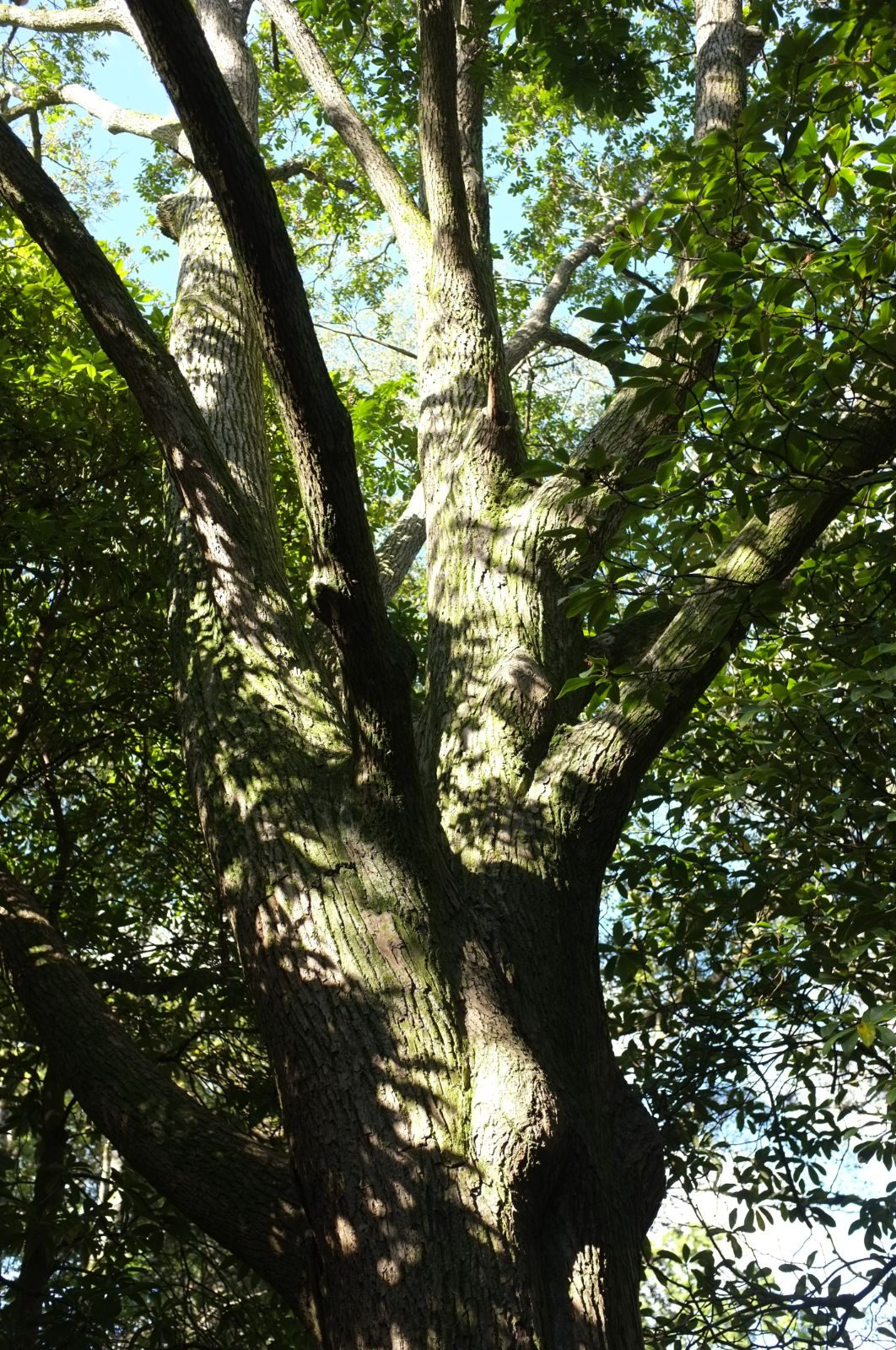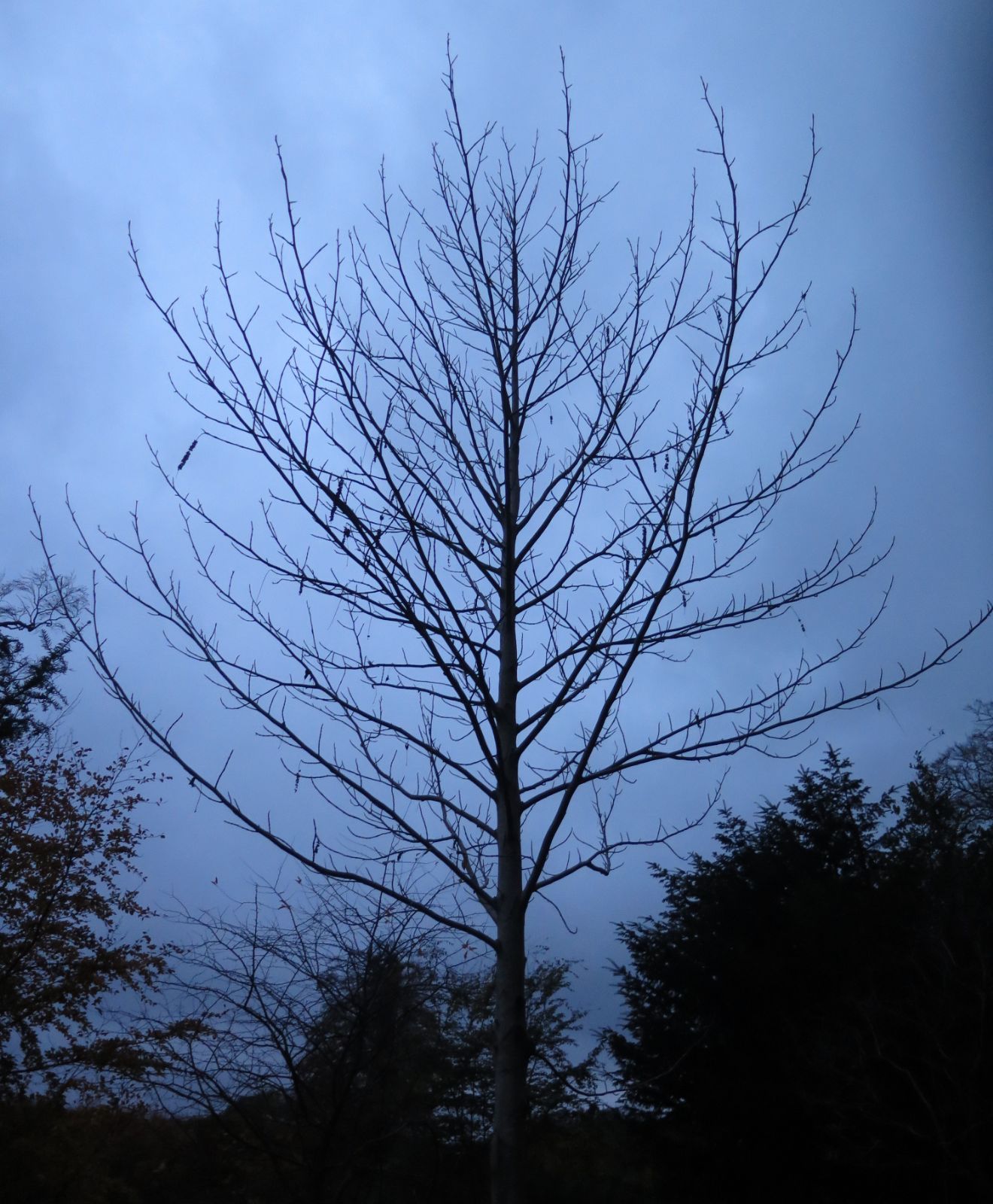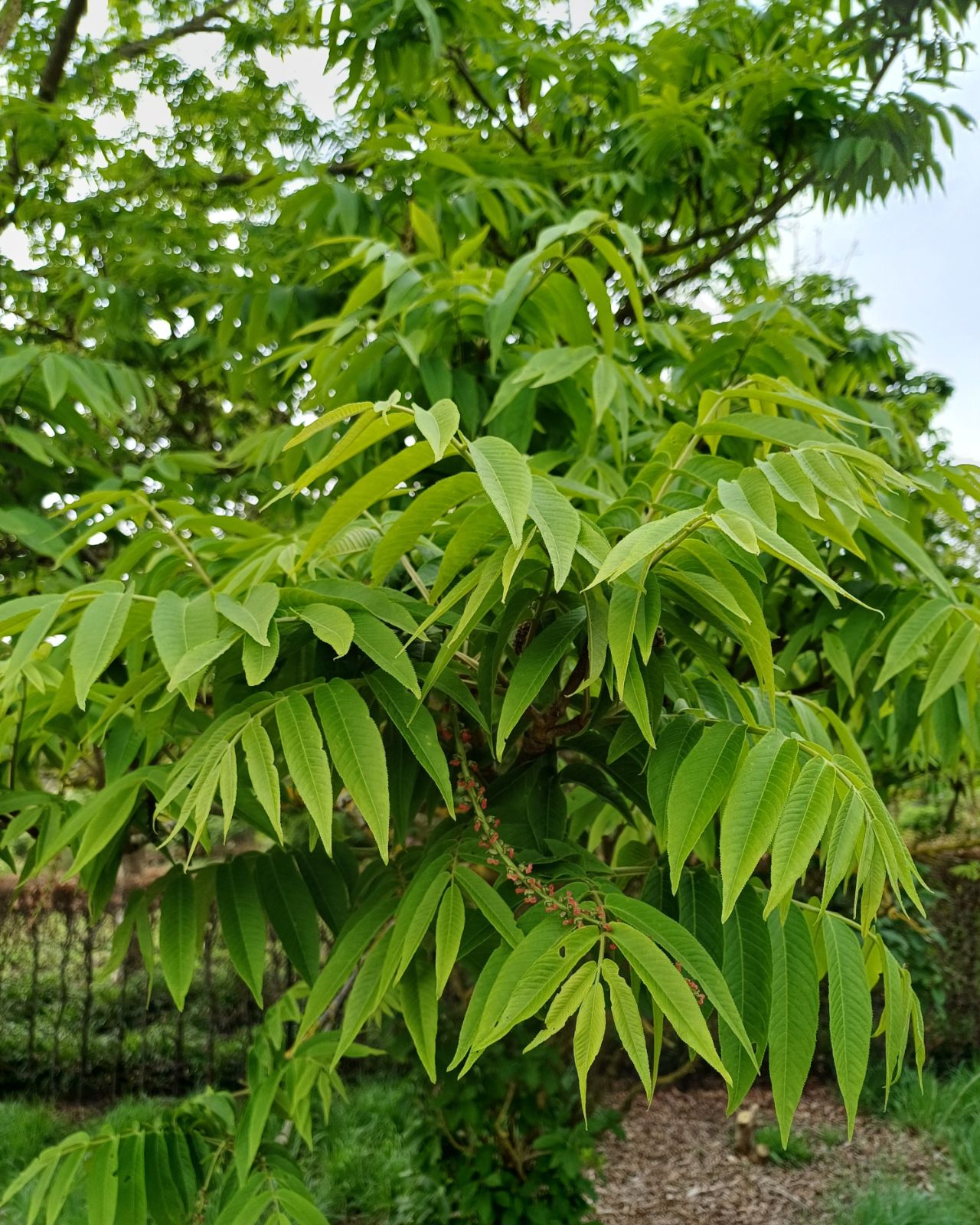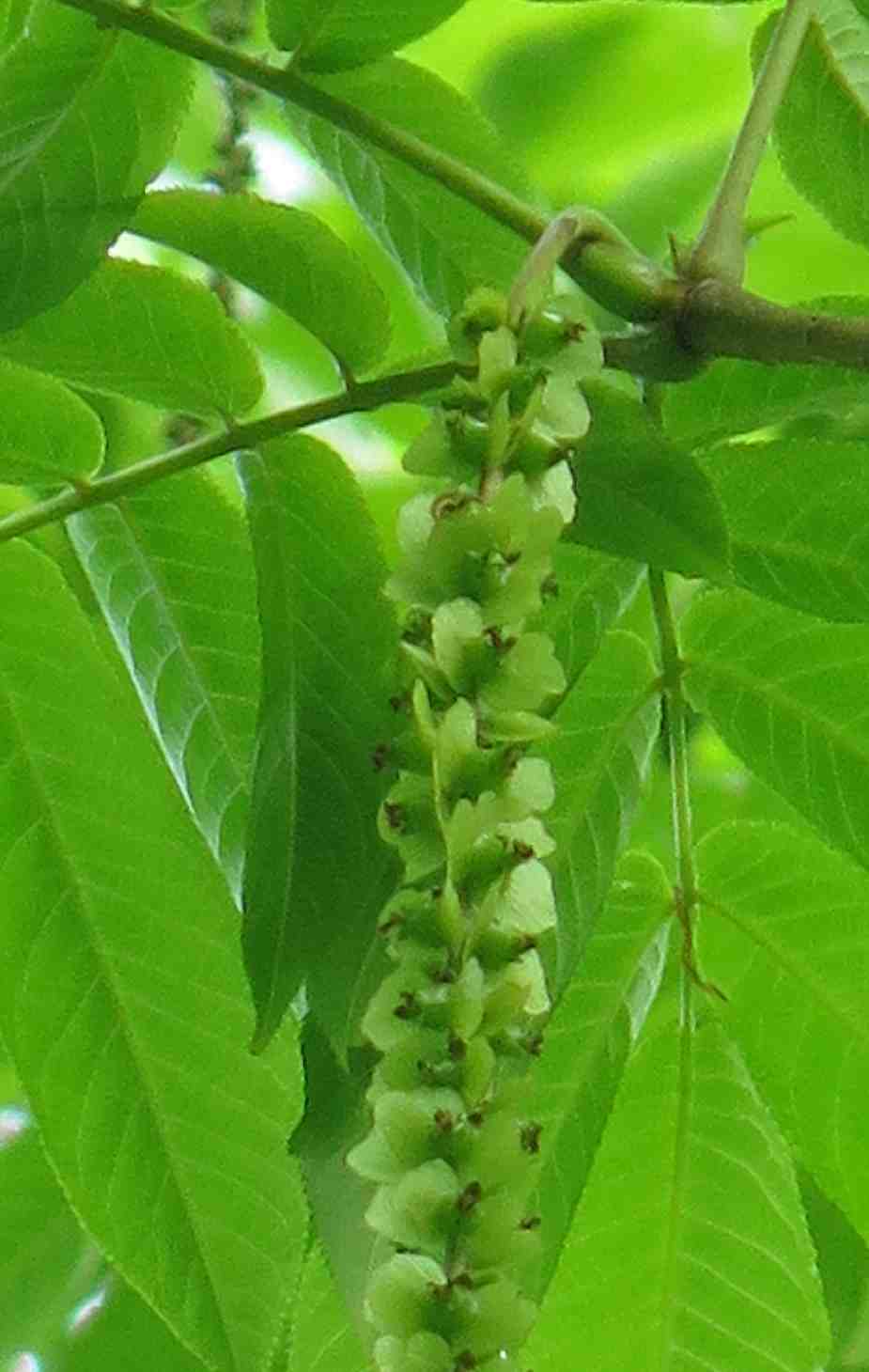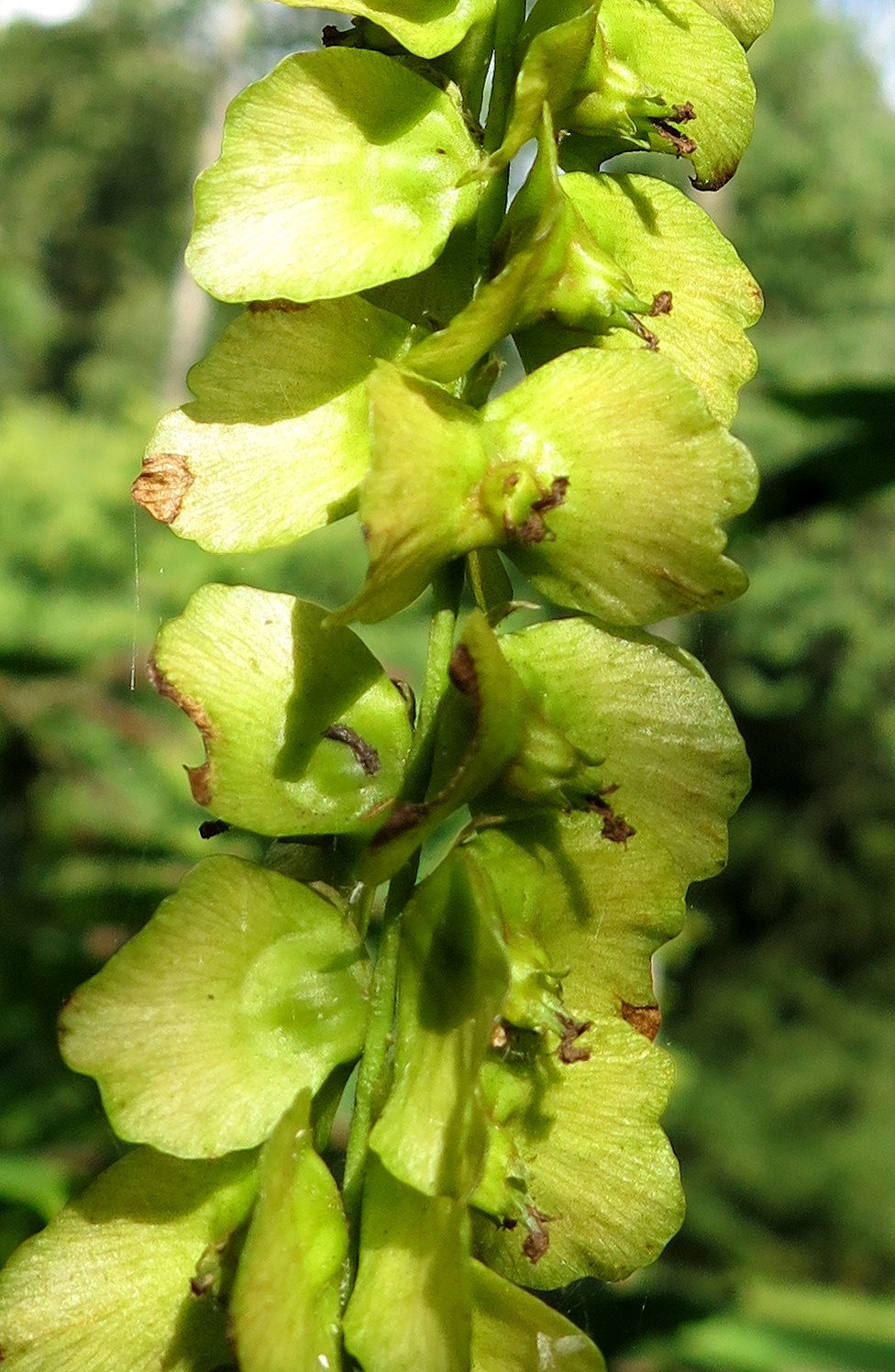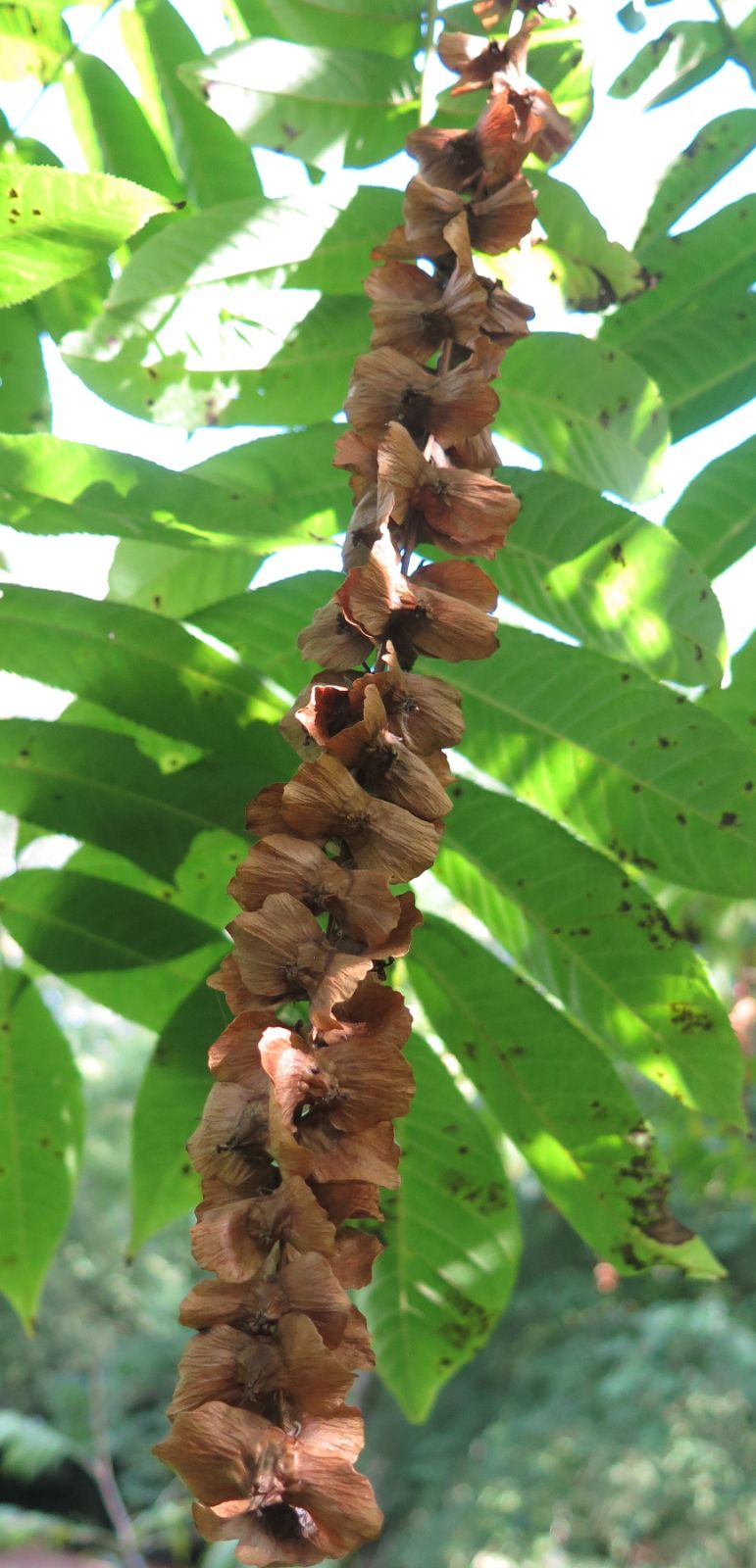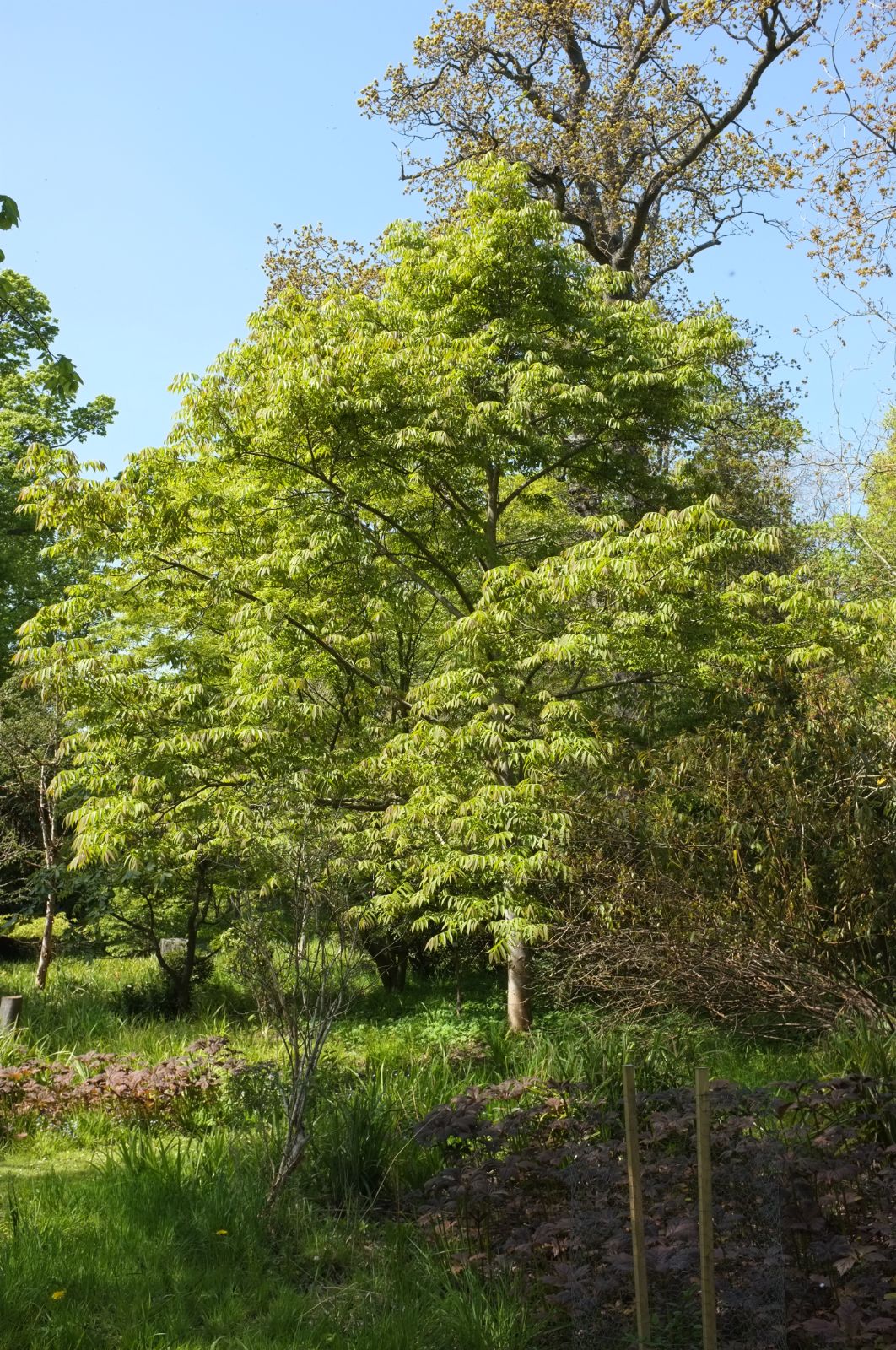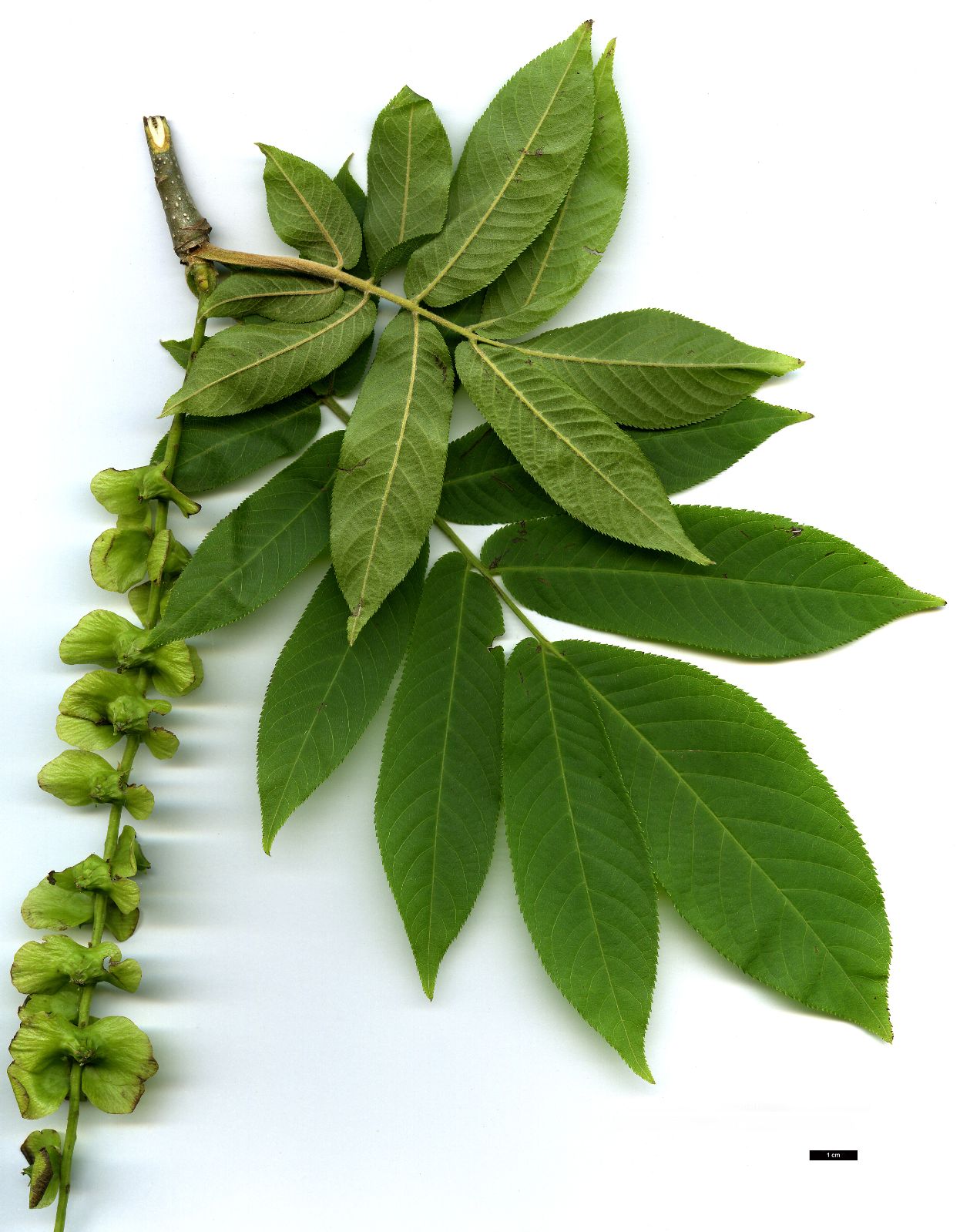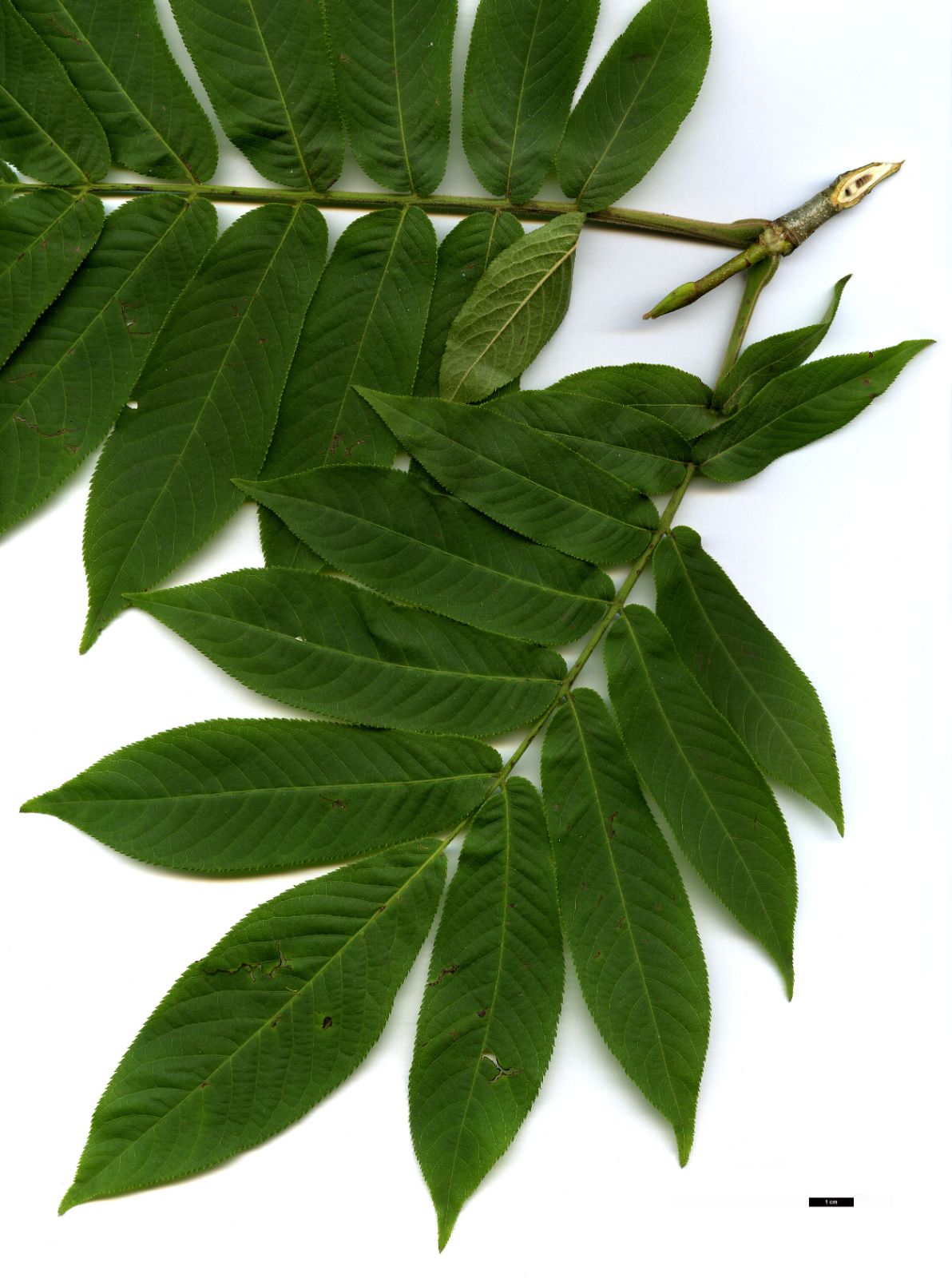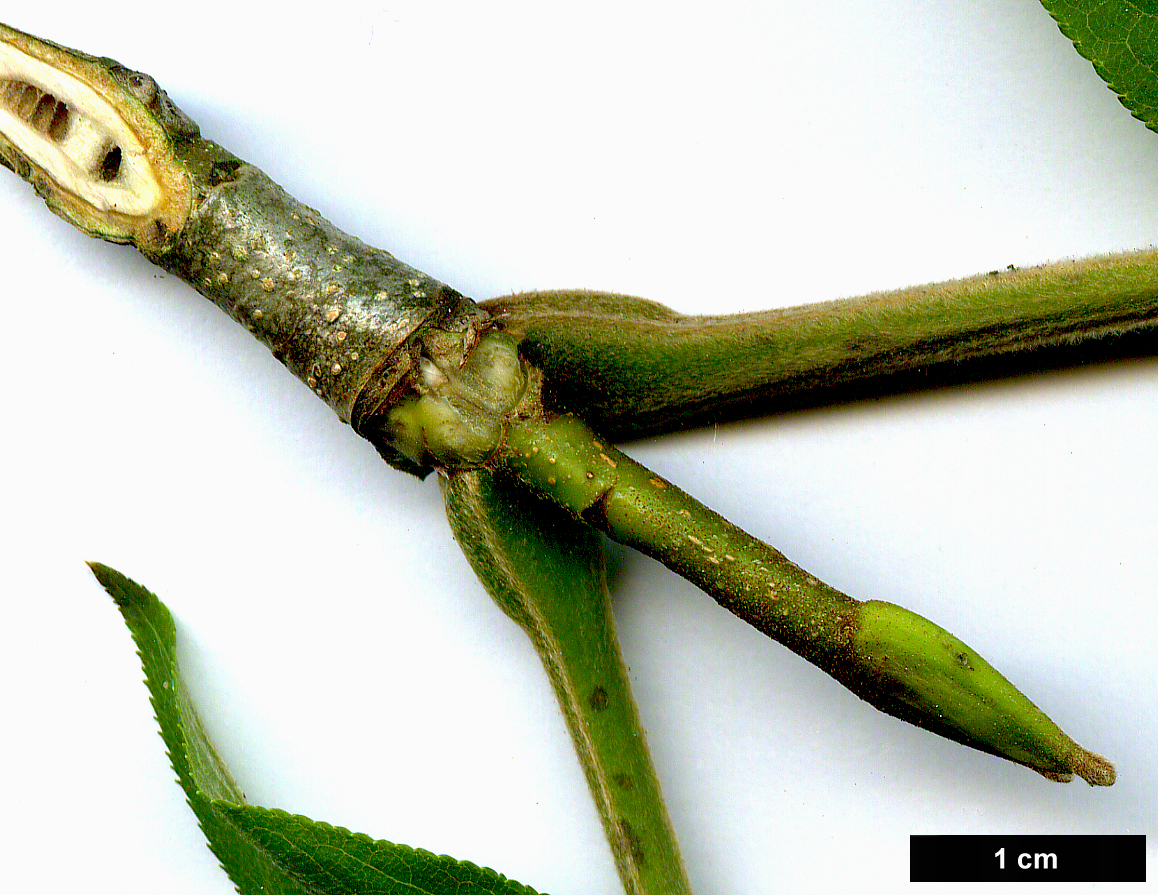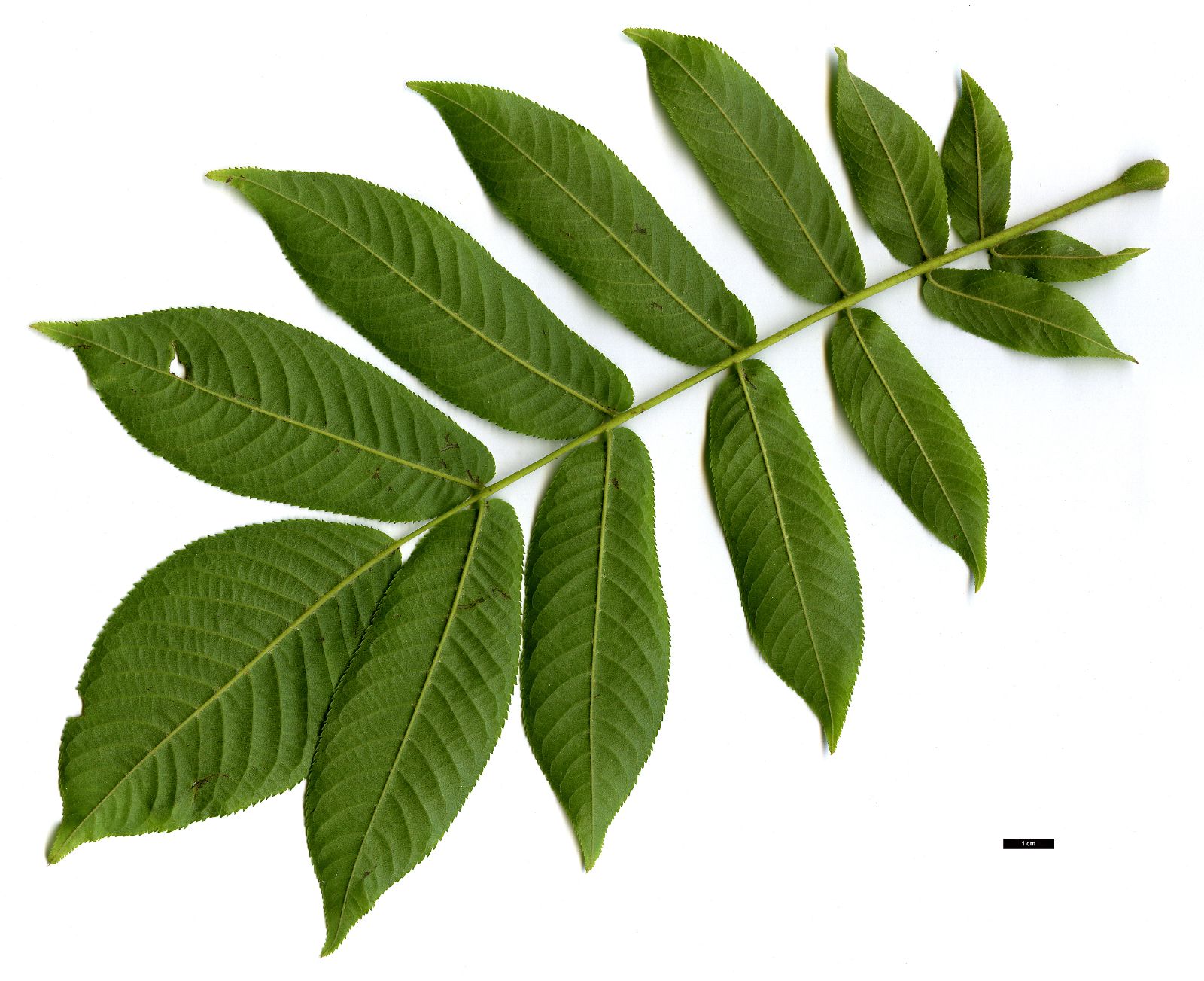Pterocarya rhoifolia
Sponsor
Kindly sponsored by
a member of the International Dendrology Society
Credits
Julian Sutton (2019)
Recommended citation
Sutton, J. (2019), 'Pterocarya rhoifolia' from the website Trees and Shrubs Online (treesandshrubsonline.
Genus
Common Names
- Japanese Wingnut
- sawagurumi
- shui hu tao
Large tree to 30 m × 1 m, often broad crowned, producing epicormic shoots but rarely suckers, with grey bark. Branchlets glabrous, terminal buds oblong, bud scales shed early, during winter dormancy. Leaves imparipinnate, 20–25(–40) cm; petiole 3–7 cm. Leaflets 11–21, 6–12 × 1.5–4 cm, sometimes imbricate, base oblique, rounded or broadly cuneate, apex acuminate, margin serrate; lateral petiolules c. 1.5 mm. Leaves variably pubescent, at least with tufts of stellate down in vein axils and on the midrib beneath. Male catkins c. 8 cm, female 20–30(–49) cm in fruit, axis pubescent. Wings of nut semiorbicular, 1.3–2.1 × 0.9–1.8 cm. (Lu et al.1999; Kozlowski et al. 2018).
Distribution China Eastern Shandong province, very dubious Japan South Hokkaido, Honshu, Shikoku and Kyushu
Habitat Riverbanks and along mountain streams, 600–1600 m.
USDA Hardiness Zone 6-8
RHS Hardiness Rating H5
Conservation status Not evaluated (NE)
Apparently the hardiest wingnut, producing impressive infructescences but few or no root suckers, and making a handsome, typically broadly pyramidal crown, it is surprising that a species introduced to Europe as early as 1888 (Bean 1976) has been so little planted outside specialist collections.
This is the Pterocarya of Japan, found widely across the mountains of the larger islands in riparian habitats, often dominating the forest canopy although it can be found alongside Aesculus turbinata, Fraxinus platypoda and Cercidiphyllum japonicum (Kozlowski et al. 2018). A more upland tree than other wingnuts, it experiences frequent and prolonged snow cover at higher altitudes, the key to its hardiness in colder temperate areas. Despite threats to its habitat from logging roads and erosion control works, it remains a common tree. References in the literature to a disjunct population in China are based on a few old and dubious records; recent searches by local and international botanists found nothing (Kozlowski et al. 2018).
P. rhoifolia seems to be widely hardy in Europe, a viable prospect even in southern Finland, although here damage to young growth by spring frosts may be a problem (Arboretum Mustila 2019). In the British Isles notable specimens recorded in The Tree Register (2019) include a mature tree at Singleton Park, Swansea (20 m × 80 cm, 2013) and a relative youngster at Howick Hall, Northumberland (17 m × 53 cm at the age of 29 years, 2019). Heavy-wet soils might best be avoided, however. A specimen planted in these conditions near a drainage ditch at the Yorkshire Arboretum failed to thrive (J. Grimshaw, pers. comm. 2019), whille at Howick Hall it grows well in a more elevated position than the many fine examples of P. macroptera along the course of a stream (pers. obs.). At Colesbourne Park, Gloucestershire, in the cold, alkaline conditions of the high Cotswolds, a tree raised from seed in 1904 by H.J. Elwes had reached 19 m by 1970 when it was measured by Alan Mitchell. It has since died, but a replacement specimen planted c. 2010 is doing well (Elwes family records).
Its potential in North America is revealed by its presence in the arboreta of diverse regions. In the Pacific Northwest it is recorded in Washington Park Arboretum, Seattle and the Hoyt Arboretum, Portland (University of Washington Botanic Gardens 2019; Hoyt Arboretum 2019). In New England, a specimen of Honshu provenance at the Arnold Arboretum attained 70 cm dbh, aged 30 years, in 2015, and was recorded as being in ‘excellent’ condition (Arnold Arboretum 2019). In North Carolina, a specimen at the JC Raulston Arboretum has grown fast, reaching 7 m in its first ten years (JC Raulston Arboretum 2019). In the Great Lakes area, it is grown at the Morton Arboretum, Illinois, although Dirr (2009) considers no Pterocarya fully hardy there. Jacobson (1996) reports a large tree measured at 21 m in 1982, north of the US/Canadian border, admittedly in the benign microclimate of Vineland, Ontario. It should be noted that Dirr (2009) generates a miasma of doubt around the identification of wingnuts in North America.
This attractive, nonsuckering species would seem a prime candidate for wider planting as a shade tree.
'Bokravention'
Synonyms / alternative names
Pterocarya rhoifolia KYOTO CONVENTION
Selected for its relatively narrow, pyramidal crown and marketed in Europe for street plantings in residential or industrial areas. Given the Trade Designation, it is no surprise that nursery listings make claims for its environmental benefits – ‘the crown is dense and has a great mass of leaves so it captures a lot of CO2’ (van den Berk Nurseries 2019); ‘large foliage area for effective transpiration cooling, in urban areas’ (Boot & Dart 2019). It originated at the Mart Brugel Tree Nursery, Oudenbosch, the Netherlands in 1999 (van den Berk Nurseries 2019).

